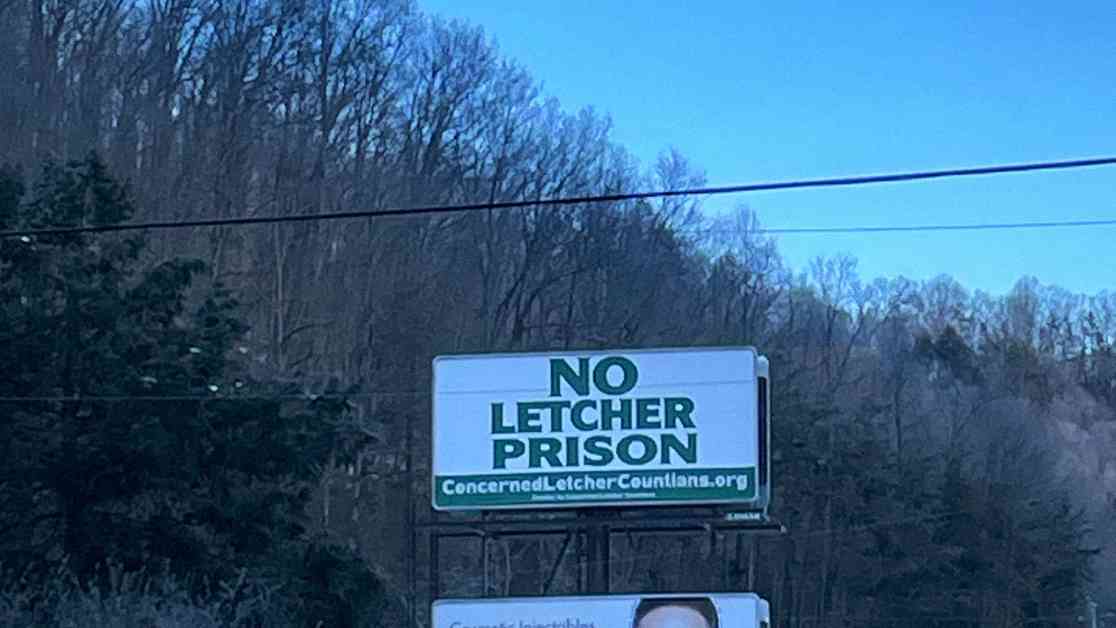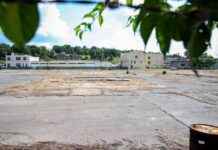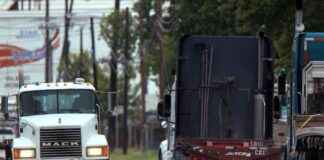On a chilly afternoon in eastern Kentucky, a group of activists gathered at the site of a former strip mine to rejoice in a momentous occasion. Taysha DeVaughan, a proud member of the Comanche Nation, described the event as a return of an ancestor, a restoration of a relative – the land beneath their feet. This particular tract, once earmarked for a federal penitentiary, was now the focal point of a movement to rewild and reclaim its natural essence, away from the looming shadow of incarceration.
The Appalachian Rekindling Project, spearheaded by DeVaughan and fellow activists, had successfully acquired 63 acres within the proposed prison’s perimeter, setting the stage for a transformative endeavor. Their vision was to reintroduce native wildlife, such as bison, and restore the land to its former ecological glory. This initiative not only aimed to protect the environment but also to challenge the narrative of industrial exploitation that had long plagued the region.
A Community United for Change
DeVaughan’s impassioned plea to safeguard the land resonated deeply with those in attendance, who shared a common bond of reverence for the natural world. The Appalachian Rekindling Project, in collaboration with local nonprofits, had rallied support and resources to acquire the plot, thwarting the prison’s encroachment. Wayne Whitaker, the former owner who relinquished the land, voiced his disdain for the penitentiary project, emphasizing the lack of tangible benefits it would bring to the community.
The proposed prison had been a contentious issue in Roxana, fraught with economic promises and environmental concerns. Against the backdrop of a declining coal industry and a struggling local economy, the prison was viewed by some as a potential lifeline, offering jobs and revenue. However, critics like Judah Schept, a justice studies professor, highlighted the underlying issues of economic disparity and environmental degradation that such projects often perpetuated.
A Quest for Healing and Restoration
DeVaughan’s mission extended beyond preserving the land; it was a quest for justice and reconciliation. She sought to address the historical injustices inflicted upon Indigenous peoples, acknowledging their enduring connection to the land and their right to stewardship. By reclaiming the land from extractive industries and inviting Indigenous communities to partake in its restoration, the project aimed to redefine the narrative of economic transition in the coalfields.
The purchase of the 63-acre plot marked a pivotal moment in the fight against the prison, challenging the Bureau of Prisons’ authority and reshaping the conversation around land use and conservation. As local residents like Artie Ann Bates shared their personal stories of loss and resilience, the significance of this initiative was underscored. Bates, a native of Letcher County, spoke of the devastation wrought by strip mining and the hope kindled by the land’s preservation.
As DeVaughan forged ahead with plans to reintroduce bison and engage local stakeholders in environmental stewardship, the future of the Roxana site hung in the balance. The Bureau of Prisons, undeterred by the setback, remained committed to its vision of a sprawling penitentiary complex. However, the tide was turning, with grassroots activism and community solidarity challenging the status quo and advocating for a more sustainable and equitable future.
In a region scarred by exploitation and neglect, the Appalachian Rekindling Project stood as a beacon of hope, a testament to the power of collective action and environmental advocacy. As DeVaughan and her allies continued their fight for justice and ecological restoration, the echoes of their efforts reverberated far beyond the reclaimed strip mine, inspiring others to join in the quest for a better, more harmonious relationship with the land.














